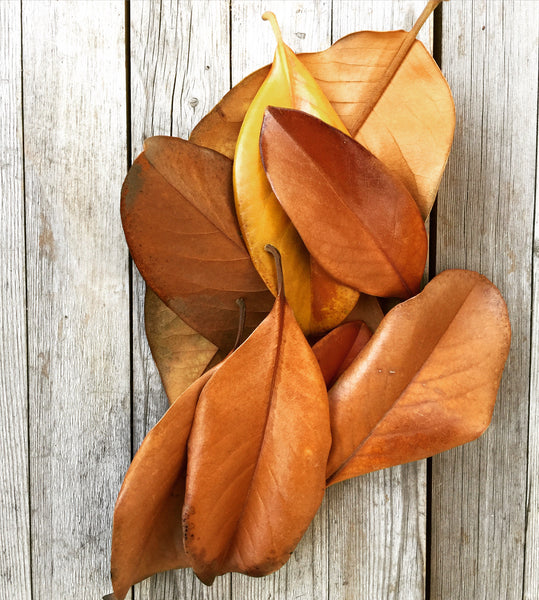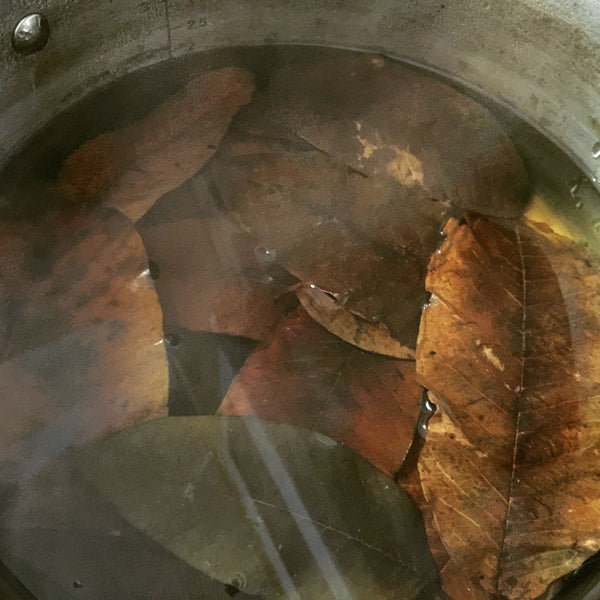- Continue Shopping
- Your Cart is Empty
Active management and the leaf-litter aquarium. Just the leaf litter. Nothing but leaf litter. Yeah.
Seriously, Fellman- how much can you talk about leaf litter in aquariums?
Wel, more than you'd think. And today, I'm not talking about "including leaf litter in aquariums." I'm talking about leaf litter as the whole "scape" of the aquarium!
Like, as in the whole thing.
In many blackwater habitats, you'll find leaf litter banks- pretty much one of the main types of ecological niches that we obsess over. Now, in our blackwater/botanical-style aquariums, we include leaves as part of the display. However, I can't say I've seen all that many aquariums which have their aquascape composed exclusively of leaves! In other words, a tank which attempts to simulate a leaf litter bank itself as the overall "theme."
Seems kind of funny, given all of our talk about them, but yeah, I can't recall too many tanks which are simply a fine, sand substrate, and leaf litter- with nothing else.
Talk about an "ephemeral" habitat- a tank with the "hardscape" composed entirely of leaf litter would be just that: Constantly evolving and changing. It would be a tank that you would most definitely have to "actively manage", in the sense that you'd be replacing leaves on a very frequent basis as they break down- a process which, as we've stated many times- mimics what occurs in nature.

And of course, you'd need to deploy a healthy sense of discipline to not want to "supplement" the "litter bank" with other botanicals, or throw in a piece of driftwood or whatever. Yup, we're talking about just modeling our system after the main leaf litter bed itself. Easy, right? Just toss in leaves! Umm...not really. There are some challenges involved here- both in creating the litter bed itself, and in the continuing management of the aquarium and it's environment.
How would this work? Is it even practical?
Well, for one thing, it would be a tank with little in the way of "vertical" structure, in that you'd be limited to how high you could "stack" your leaves, right? And, as they'd break down, your "vertical" would diminish somewhat! So, this would, IMHO, necessitate starting off with a shallow aquarium- one which you could easily stack leaves 8 inches/20cm or more, with a modest water column over the litter bed. Shallow and wide would be good! Alternatively, you could use an aquarium of "standard" height, and simply not fill at all the way, as shown here:
(But this tank, awesome as it is- is NOT exclusively leaf litter, of course. But you get what I mean...)

So, right from the outset, you've got a "structural challenge" to contend with. You'd probably start off with a sand bed of anywhere from 1/2 inch to 2 inches/1.27cm-5.08cm, to create a literal "foundation", and to foster some denitrification or biological filtration "support" within the system. From there, it would make sense to start with your most "durable" leaves as the "first layer" of the litter bed, as the "structural integrity" they provide would create some void spaces and a "trophic structure" (a structure that fosters the feeding habits or relationships of different organisms in a food chain or food web). It would also allow some water circulation within the litter bed itself, to avoid anaerobic pockets as the leaves break down.

So, I'd probably start the litter bed off with Magnolia and Jackfruit leaves. These leaves tend to be a bit more solid than say, Catappa or Guava, and hold their "rigidity" longer as well. I'd ask my supplier (Hmm..I Know of one, if you need a reference, heh, heh..) to send me larger specimens of each to help "build up" a more stable, slightly "elevated" first layer.
Next, I'd probably go for smaller, longer-lasting leaves, like Mangrove, which we've come to love in all types of systems (not just brackish ones), because we've found them to be long-lived and remarkable durable submerged. They also have a very "exotic" look, from an aesthetic standpoint (Hey, even when you're working with just leaves, you need some aesthetics, right? Yeah.)

Next, you would likely use leaves like Guava, Loquat, and Catappa, all of which have correspondingly shorter "useful lifespans" when submerged- with Catappa being likely the most "ephemeral" of the bunch, breaking down significantly in just a few weeks.
Of course, water movement and filtration are necessary in such a system, and both present somewhat of an "engineering" challenge- or at the very least, require careful consideration with regards to how you'd employ each.
For filtration, I think there are a few approaches that would work well:
1) An outside, hang-on-the-back "Power Filter"
2) A canister filter with surface skimmer
3) An air-driven sponge filter
4) Employment of an "all-in-one" aquarium with an integrated surface overflow and filter chamber (It would be quite difficult to find a shallow one, though!).
5) "Reef-ready" tank with an overflow weir (definitely would have to be a "custom job") with a sump.
All of these formats would work. The keys are to move some water, break up surface/air interface for maximum gas exchange, and to provide physical removal of decomposing leaf materials which are actively moving about the water column. or, i the case of the air-driven sponge filter- to keep these materials in suspension so that you could physically remove them with a net.

I told you this type of tank involves some "active participation" in its management! Not at all the "set-and-forget" type! I'd run some activated carbon in this tank. Oh, and if you're incorporating mechanical media, you'll be cleaning and/or and replacing it weekly as needed.

Indeed, simply starting up this type of display would take some patience, observation, and probably some proactive work on your part.
With a large volume of leaves added to the aquarium from day one, you would not want to convert an existing system with fishes to such a tank. The potential exists for some problems: Excessive bacterial respiration as a result of a large influx of leaves to an established system could lower the water's dissolved oxygen AND increase CO2...a recipe for disaster with an existing fish population. We've talked about this possibility many times before -both in regards to the leaves themselves and the biofilms that they foster as they break down.

Although biofilms and decomposing leaves are not in and of themselves dangerous- a rapid environmental change of any type in an existing aquarium is no bueno! And don't forget- leaves and their associated microfauna are bioload, creating an environmental change to an existing tank when you plunk down a large quantity at one time. So, the reality is that you should attempt such an aquarium from scratch, and allow adequate time for biological cycling before adding your fishes.

All caveats aside, such a system, once up and running, is fascinating and a bit less challenging than you might think. Like any aquarium with biomass, once it's "cycled", a leaf-litter-only aquarium will be remarkably stable, in my experience. The presence of sand as both biological and pH support is an important aid, as are regular water exchanges (like weekly, 10% of water volume) once the tank is established.
You'll want to monitor pH regularly, and make the decision to remove or leave in place your leaves as they break down. And of course, you'll need to regularly replenish leaves to maintain your litter bed!
What kinds of fishes could you keep in such an aquarium? Well, the leaf litter banks of Asia and Amazonia (and Africa, for that matter), presents a veritable "who-s who" of popular aquarium fishes.

In addition to the ever-popular (and environmentally appropriate) characins/crenuchids and dwarf cichlids, you could try unusual fishes like Steatogenys duidae, a remarkably cool, modestly-sized knife fish, which is known to inhabit leaf litter beds. And others in it's genus, equally cool and interesting! Imagine a population of these fish in a leaf litter bed tank!
Yeah...

Or, what about the incredible Amazon Leaf Fish, Monocirrhus polyacanthus, if you're into a modestly-sized rather specialized (like, live fishes only!) ambush predator- a group of which would be incredible in this type of system!

(Image by Kenpai, used under CC BY-S.A. 3.0)
Then you have the so-called "Darter Tetras" of the genera Elachocharax, Characidium, Poecilocharax, etc.- many species of which are perfectly adapted to live among leaf litter beds, all of which are, IMHO, remarkably under-appreciated and not commonly kept aquarium subjects!
Of course, feeding strategies in such aquariums, where many of the fishes you keep would dwell just above- or within- the litter beds, require some thought. With the exception of the aforementioned Amazon leaf fish, most are what scientists call Autochthonous insectivores, meaning they eat insects that find their way into the water. So to us aquarists, that means foods like blood worms, ants, fruit flies, mosquito larvae, black worms, etc. are perfect.

And you have the opportunity to "cultivate" some "in situ" supplemental food organisms like worms, Gammarus, and Daphnia, etc. within the leaf litter itself for a while prior to adding your fishes (to give a chance for a viable population of these organisms to establish free of predators!). There is still much to learn from this practice on an aquarium hobby level, and the many benefits of doing this have yet to truly manifest in the freshwater world!
Sure, you'll be managing an active, dynamic, lower-pH blackwater environment, and have to work with all of the associated husbandry requirements, challenges, and procedures- but this is all part of the game. It's all a group of skills which nay of us have acquired already with our blackwater/botanical-style aquarium "practice"- this is merely the ultimate expression of that.

It's an excise in technique. An expression of confidence. A bold assertion that we as hobbyists can try things that, on the surface seem incredibly difficult, and possibly unattainable. An affirmation that we not only can do such tanks- but we can do them well, manage them long term, and make the mental shifts necessary to create systems which, just a few short years ago, were clearly "fringe" and perhaps even a bit "kooky"- when the reality is that they are the springboard to all sorts of "unlocks" and even major breakthroughs in specialty aquarium concept and management.
Who's in on this?
Stay excited. Stay motivated. Stay creative. Stay confident. Stay disciplined...
And Stay Wet.
Scott Fellman
Tannin Aquatics
2 Responses
Scott Fellman
Hi John,
Glad you enjoyed it! I think that the idea of a totally leaf-litter-scaped tank is one of those things that seemed so crazy…until we actually do one. The leaf-litter only tank I did was one of the most stable, easy-to run, and altogether unique tanks I ever did…And the fishes loved it! Hope you keep playing with this, yourself!
-Scott
John E Lumb
Loved this article, I am keeping some Apistogramma macmasteri and found this article very interesting indeed. I currently have flooded my nano tank with Ctappa leaves but I will use some magnolia leaves in the future and Alder cones.
The tank water has a lot of Tanin stain which is fine and they love it as do the Rosy Loaches, who are in there by mistake but are all getting on well and they appreciate the litter. I hope the litter will assist in lowering the PH enough to ensure the right water conditions to breed the Macmasteri.












Scott Fellman
Author